China has been producing peaches and nectarines for 3,000 years and today grows more than half the world’s supply.
Since the 1980s, Chinese growers have been growing some of their peaches and nectarines in solar-heated greenhouses so they can have fruit on the market starting in March, before outside-grown fruit is available, and obtain extremely high prices.
China has almost 40,000 acres of greenhouse-grown peaches and nectarines. Many of the nectarines are low-chill varieties that can yield 6 to 9 tons per acre and return the equivalent of US $11,000 to $22,000 per acre to the grower. One farm family typically has one or two greenhouses.
Besides extending the season and the geographic growing range, greenhouses can reduce the risk of frost damage and rain cracking and protect the fruit from hot winds and hail. In addition, fruit can be marketed with reduced pesticide residues or labeled “pollution free.”
Typically, an insecticide is required only to control green peach aphid in the spring, if at all. Two types of structures are used: a single-slope lean-to greenhouse and a high tunnel.
Lean-to structures
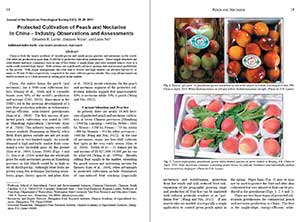 For more information, see Layne’s recent publication, (click to download the PDF) For more information, see Layne’s recent publication, (click to download the PDF)“Protected cultivation of peach and nectarine in China—Industry observations and assessments.” |
This simple, inexpensive structure is used primarily in northern China (latitudes 32 to 47°N), where the winters are cold but sunny. It is oriented east-west so that it faces south for maximum sunlight absorption in the winter.
The back (north) and side walls are made of soil, brick, cinder block, or stone (sometimes two layers with an insulating material such as perlite or coal cinders between). The back and side walls absorb heat, provide support, and protect against cold winds.
The structure has a short back roof and a much longer front roof made of polyethylene film supported by a frame of bamboo or steel. The typical structure is three to four meters (10 to 13 feet) tall and six to eight meters (20 to 26 feet) from front to back. The overall length of the structure may be up to 330 feet.
A lean-to structure may have a sunken floor and may be cut into a hillside in mountainous areas. Cutting the back wall into a hillside reduces construction costs.
The structure relies exclusively on solar heating, so supplemental heating is not required.
Techniques to satisfy the winter chilling requirement begin after leaf drop in the fall (usually November). An insulation blanket (rice straw quilt, bulrush or cattail mats, or woven fabric) is rolled down over the plastic roof from the top to the bottom of the south side during the day to keep it cool.
The insulation blanket is rolled back during the night to release heat. This is usually done for one month. Then, practices to conserve heat begin where the insulation blanket is rolled up during the daytime and rolled down during the nighttime.
Heat from daytime sunlight is absorbed by the side and back walls and the ground. Typically, it takes 30 to 40 days to reach bud break.
The insulation blankets may be rolled up and down each day by hand or by a simple motorized system. Newer insulation blankets made of synthetic fibers may be waterproof and are easier to handle.
Disadvantages of the lean-to structure include the difficulty of automating practices and inadequate light penetration for some crops. Land-use efficiency is low as greenhouses need to be spaced so they don’t shade each other.
Because of limited airflow, relative humidity is high, which can increase disease pressure. Toxic gases, such as ammonia from fertilizers, can also build up.
Unlike the lean-to structure, the high tunnel is oriented north-south. It does not have a back wall, which increases the amount of light absorption. Structural spans are made from bamboo, steel, or concrete and are supported by concrete pillars and cross braces.
The grower waits until after the chilling requirement is fully satisfied naturally in the winter before using the insulation blanket, if at all. When used, the insulation blanket can advance the crop by 30 days. It is only used for conserving heat at night. With no insulation blanket, crop advancement is limited to 15 days.
Planting design
Dormant-grafted trees on peach seedling rootstocks are typically planted three to four-and-a-half feet apart with four-and-a-half to six feet between rows, sometimes on raised beds. They are trained to a central leader and laterals may be pulled to horizontal by strings to increase sunlight exposure and improve fruit color. The plastic cover is used annually from the first year of growth.
Pollination in either type of greenhouse is accomplished by introducing honey bees or by hand-pollination because there are no insects or wind when the plastic roof is closed.
Because the light level inside the greenhouse can be 30 to 40 percent lower than outside, depending on the greenhouse structure and the transparency of the plastic, a reflective film is sometimes used on the floor or back wall to improve fruit color and quality.
Following harvest in the summer, the plastic is rolled up, the roof is left open, and trees are exposed to the outside environment.
From late July of the first year, water and nitrogen are limited and a growth regulator (paclobutrazol, or PP333) is sprayed on new shoots to stop vegetative growth and promote flower-bud development.
Each year, minimal winter pruning is done, but before harvest new shoots are tipped to improve fruit coloring. After harvest, heavy summer pruning is done. Old fruiting branches are removed and only the current season’s growth is left for fruiting the following year.
The first crop is harvested in the second year. Peaches and nectarines may be intercropped with another fruit, such as strawberry, during the first or second year.
These production systems are typically productive for 10 or more years. Irrigation is typically by flooding, however, some growers are using drip or microsprinklers.
Some farmers are growing later-ripening cultivars in solar greenhouses because the fruit is typically larger and has higher sugar levels than early-maturing cultivars grown outside at the same location.
Challenges
Chinese scientists have noted many challenges relating to growing fruit in greenhouses. They see a need for better training for farmers and standardization of cultural practices, such as pest management, fertilization, irrigation, pruning, and cultivar selection.
Local and central Chinese governments have developed more than 5,000 demonstration farms to teach farmers about greenhouse systems. Although fruits and flowers make up less than 7 percent of horticultural crops produced in greenhouses, the volume is expected to increase.
In addition to the substantial economic rewards for the farmers, greenhouse cultivation provides work for a labor force that would otherwise be idle in the winter. The solar greenhouse systems are preferred over traditional greenhouses because they don’t need coal for heating or pollute the air.
Some breeding programs, such as the one at Zhengzhou Fruit Research Institute in Henan Province, are developing low-chill peach and nectarine cultivars specifically for use in greenhouses.
This is necessary because most existing cultivars were bred for open field production and eating quality may sometimes be poor. Breeders hope to develop varieties with low-chill requirement and low-light tolerance along with good eating quality. •
For more information, see Layne’s recent publication, (click to download the PDF) “Protected cultivation of peach and nectarine in China—Industry observations and assessments.”
Watch
Video from inside a commercial Chinese solar lean-to greenhouse, courtesy Dr. Desmond R. Layne.

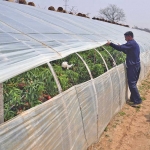
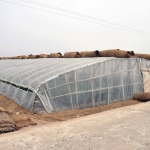
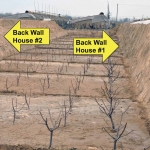
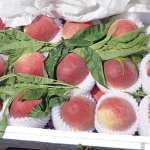
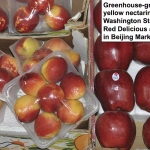
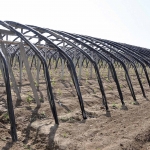
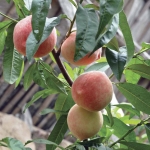
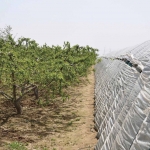
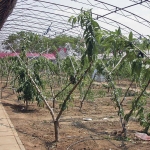
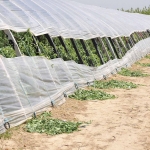
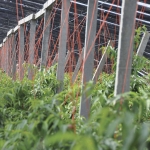
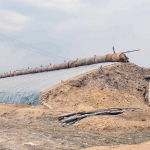
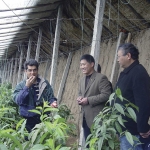
Leave A Comment